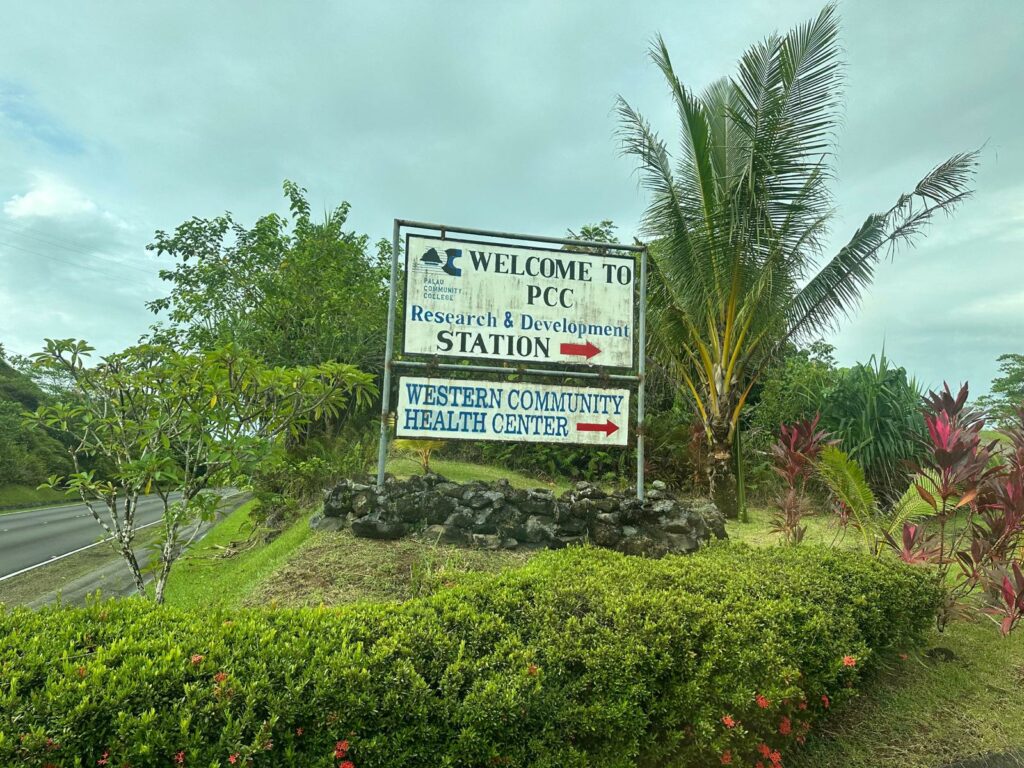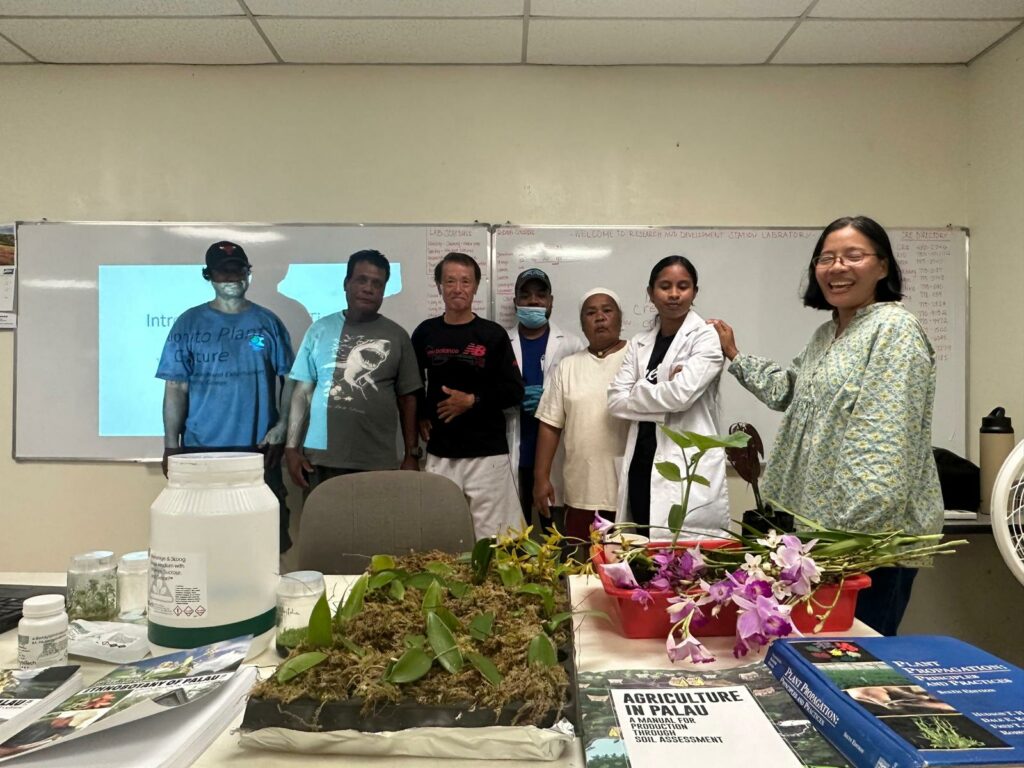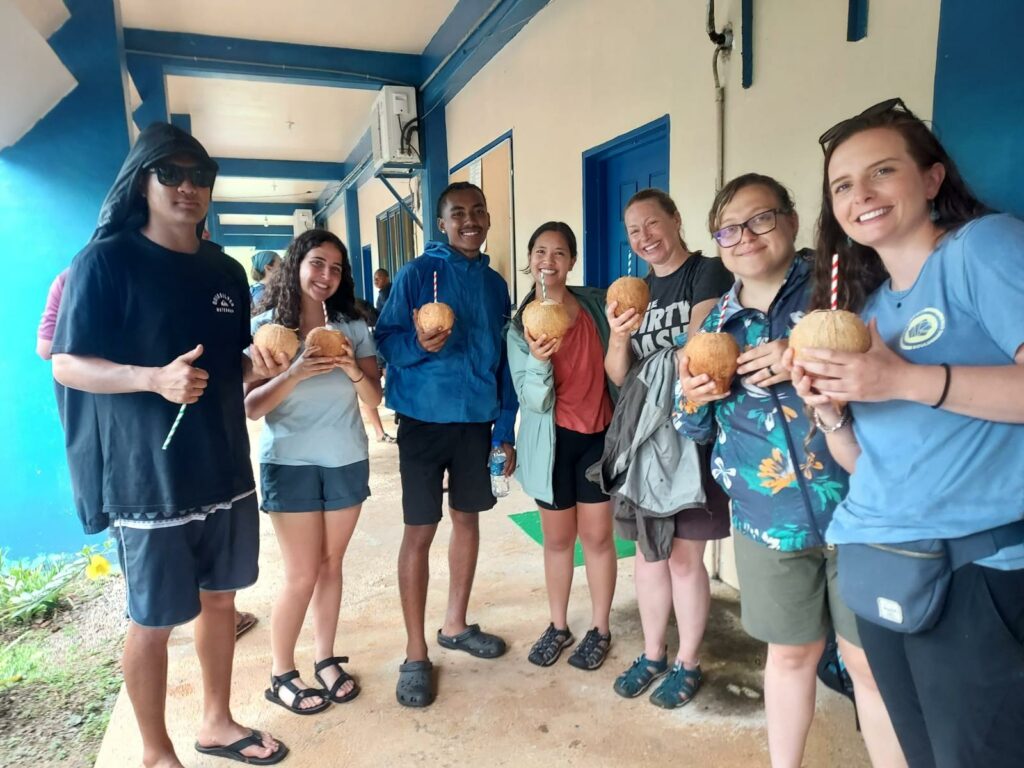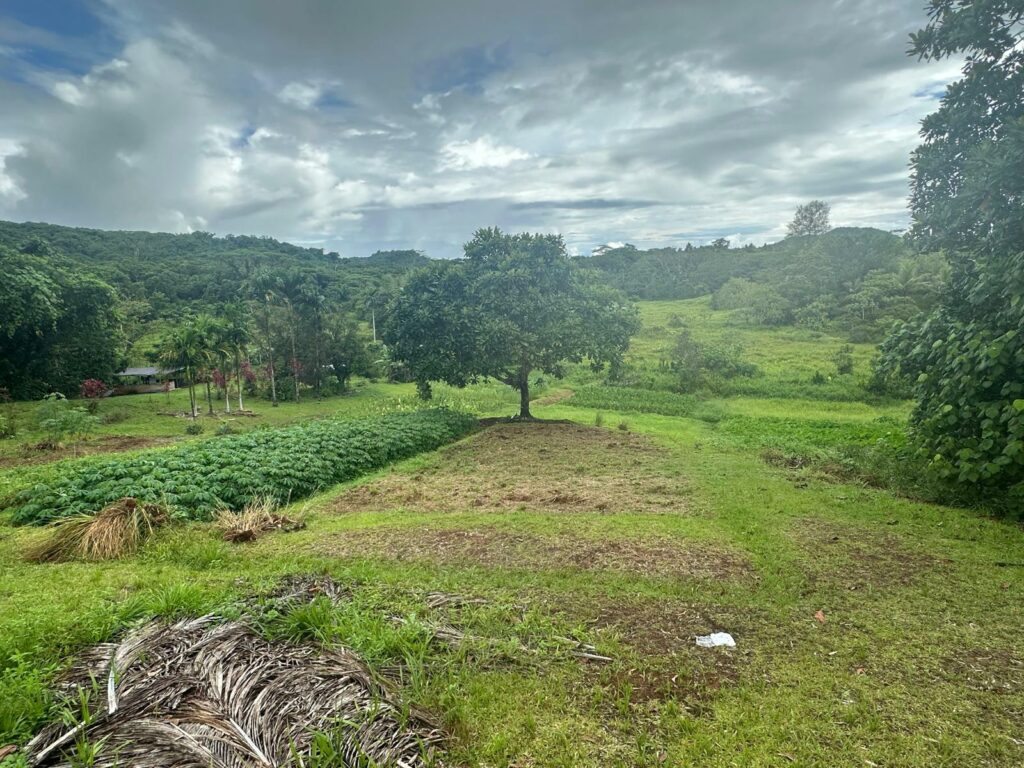After a refreshing day off, we got up bright and early and headed out to PCC’s Cooperative Research & Extension (CRE) station to visit their research & development section.

We started with presentations by Dr. Nwe and Arsenio, a representative from Koror State Solid Waste Management. Dr. Nwe gave us a brief background and explanation of the research they are conducting regarding plant tissue culture and agriculture. We learned that they do a lot of research around crop improvement not just for the country of Palau but to help surrounding islands as well.
Arsenio gave us a background of what their office does and how they manage waste in the island and their overall goal of “environmental protection & preservation”. They sort the waste into different types of materials: recyclables, plastics, food waste, metals, and glass. For the plastics they have implemented an energy recovery program that will melt plastic into a bio-diesel fuel which can be used for their generators to power facilities all while producing no harmful emissions and reducing plastic waste. Another interesting project they told us about was their repurposing of glass. They will take the recycled glass and melt it down in a kiln to be turned into blown glass art to be sold.

After the presentations, we split into three different groups to get hands-on experience of the work they do. One of the stations was in their plant tissue culture lab, where we got to see and help propagate clones of different species of taro. This was conducted in a sterile environment so before entering we put on lab coats, masks, and gloves. This is to protect the genetic diversity of the taro as the lab serves as a form of seed bank for taro. The process begins by taking a clone and dissecting it down to the sprout and then placed in a gel media to grow. The gel is changed every month for 3 months, and then the taro is taken out of the jar and then cleaned and planted.

Another station was learning about soil analysis with Arsenio. We got to review the results of the soil samples taken when we were at the bauxite mines on day 3. While the dirt is still generally unproductive, the soil from 2020 did show some progress in that there was an increase in magnesium. Arsenio and his office use this system to analyze the compost they make to see if they need to add or take away anything, they also use this to test areas of concern around the island. One of the projects that Koror State Solid Waste Management has started is the Urban Growers Program. This program provides opportunities and access for families and households in Koror to grow their own gardens to give better access to healthy and fresh food. They provide the tools and resources needed for the families to understand proper waste management.

The last station, was with Kodama-san in the greenhouse. He showed us propagation techniques of air layering, cutting, grafting, and budding. Air layering is when we expose the stem and then wrap in moss to encourage roots to form, which you can then cut and plant after a few months. Cutting is taking a healthy portion of a plant, applying hormone powder to the base, and placing it in soil where it can then grow and become a separate plant. Grafting is a technique where tissues of plants are joined together so that the new branch will become part of the host plant. Budding is grafting technique in which a bud of a plant is grafted onto the stem of another plant.

After lunch, PCC CRE provided us with some refreshing coconuts to enjoy before our tour of the farm.

The first stop on our tour was their livestock, where the manure of the pigs is collected to be used for compost. We also got to view their banana crops where they had two separate crops to test how one did with fertilizer and one without. Even though they were planted at the same time, and are the same species, the fertilized group was larger in size and healthier overall. The last stop was their taro and tapioca patches. They explained that Palau has three different crop environments: sers (uplands), mesei (swamp/marshlands), and dechel (wetlands). We were able to see examples of all three environments, with taro traditionally being grown in a mesei environment.

Today’s blog was written by Noah and Alix

